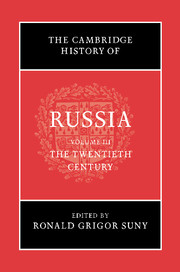Crossref Citations
This Book has been
cited by the following publications. This list is generated based on data provided by Crossref.
Hay, Jonathan
2008.
Antinomies of Art and Culture.
p.
113.
Latour, Bruno
2008.
Antinomies of Art and Culture.
p.
309.
Papastergiadis, Nikos
2008.
Antinomies of Art and Culture.
p.
363.
Groys, Boris
2008.
Antinomies of Art and Culture.
p.
71.
Wark, McKenzie
2008.
Antinomies of Art and Culture.
p.
345.
Negri, Antonio
2008.
Antinomies of Art and Culture.
p.
23.
Meyer, James
2008.
Antinomies of Art and Culture.
p.
324.
Enwezor, Okwui
2008.
Antinomies of Art and Culture.
p.
207.
Hung, Wu
2008.
Antinomies of Art and Culture.
p.
290.
Minglu, Gao
2008.
Antinomies of Art and Culture.
p.
133.
Rolnik, Suely
2008.
Antinomies of Art and Culture.
p.
97.
Amor, Monica
2008.
Antinomies of Art and Culture.
p.
83.
Smith, Terry
2008.
Antinomies of Art and Culture.
p.
1.
Lev, Manovich
2008.
Antinomies of Art and Culture.
p.
333.
Krauss, Rosalind
2008.
Antinomies of Art and Culture.
p.
60.
Richards, Colin
2008.
Antinomies of Art and Culture.
p.
250.
2008.
Antinomies of Art and Culture.
p.
383.
Leonard, Zoe
2008.
Antinomies of Art and Culture.
p.
187.
Condee, Nancy
2008.
Antinomies of Art and Culture.
p.
235.
Ogbechie, Sylvester Okwunodu
2008.
Antinomies of Art and Culture.
p.
165.



